Bread is present on the table of all peoples of the world; it is an integral part of the food culture. In the first hours, it is a fragrant, mouth-watering product with a crispy crust. And how sad it is to see how it is affected by molds, it spoils. Therefore, it is useful for all people to know how to store bread so that it does not turn into moldy, unsuitable for eating.

Breadbox, traditional storage
The storage of bread is accompanied by a natural physical phenomenon - the evaporation of water. Of course, it is impossible to completely stop the drying process of a bread product. It can be slowed down by placing the bread in a closed space, such as a bread bin, a bag made of paper, cloth, polyethylene, or a saucepan with a lid.
Attention! Earned on our website kitchen designer. You can familiarize yourself with it and design your dream kitchen for free! May also come in handy wardrobes designer.
Important: The material in which the bread is wrapped so that it does not stale must be air permeable. Otherwise, the product will become moldy. This is especially true for plastic bags. In the factory bags, holes are specially made for air exchange. If the package is intact, it is not necessary to close it tightly; it is better to make several holes for airing yourself. It happens that polyethylene adheres tightly to the surface of the bread. Free the space between the bread crust and the bag.
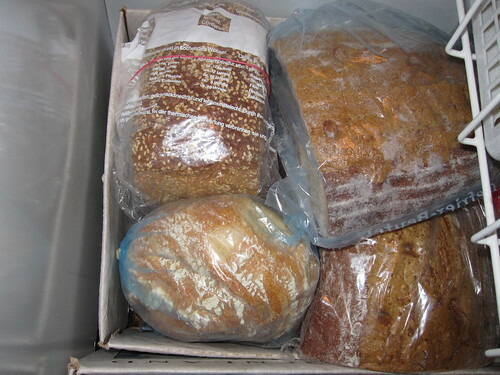 Photo by tiefkuehlfan
Photo by tiefkuehlfan
Long-term storage secrets
The shelf life of bread depends on many factors:
- room temperature;
- air humidity;
- flour quality;
- compliance with the norms in the baking process.
Mold develops most rapidly if there are already fungal spores in the neighborhood (poorly washed bread bin, old crumbs, previously used plastic bag), temperature 25 - 30 ° C, humidity 65 - 80 %. To maintain a normal microclimate, you should regularly ventilate the kitchen, turn on the hood during cooking.
It so happens that flour from grains affected by mold is used for baking. During cooking, it is not completely killed (the product is not baked), therefore, regardless of the storage conditions, existing spores quickly germinate. If this is repeated regularly with products from the same manufacturer, it is best to simply try buying products from another bakery.
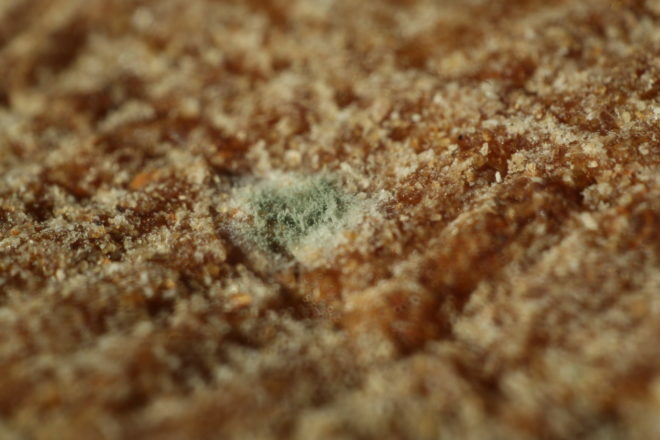
Eating moldy bread is hazardous to health. If mold is visually detected in one place, in fact, the whole loaf is affected. You cannot cut the edge, but use the crumb.
Black and white, together or apart
One of the questions that people decide for themselves is how best to store bread if different types are bought in the family. It is better to store products made from wheat and rye flour separately. Can be put in 1 bread bin, but preferably in different bags, compartments. Each product has its own environment, smell and percentage of water. Black has a longer shelf life, since it initially contains more moisture, which means it does not stale for longer. A more acidic environment leads to greater resistance to fungus. White is impregnated with the aroma of black, if they lie side by side, it hardens faster.
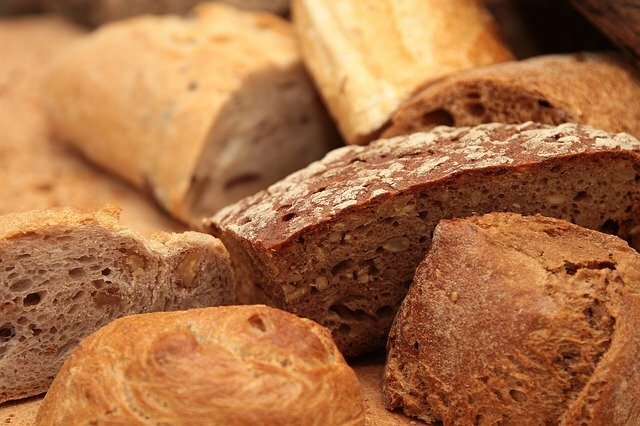
Bread storage methods
All methods are aimed at reducing the evaporation of moisture, and most importantly, to prevent the formation of mold. This means that the bread must be insulated with breathable materials. Hide in a bread bin, wrap in cloth, bag. If you use low temperatures, as in a freezer, it will stop all the vital processes of microorganisms, the shelf life will increase many times.
Breadbasket storage
Traditionally, bread bins are used to reduce the drying of bread. The best products are made from natural materials - wood, metal (stainless steel). Plastic will also work if it is of good quality and is suitable for food use. To prevent the bread bin itself from becoming a source of fungal spores, it must be kept clean. Remove bread crumbs regularly, leave the door open for ventilation once a day.
You can put the loaf in a saucepan with the lid on. A stainless steel or enamel-coated product is good. The container itself, where the bread is stored, should be wiped with a sponge moistened with a weak vinegar solution or alcohol, at least once a week.
All bread bins, except for wooden ones, are useful to wash with soap or dishwashing detergent. It is enough to wipe the product made of wood with a dry cloth, paper napkin. After cleaning, the bread bin should be well dried, preferably in the sun. After that, put bread in it.
It is also important to allow time for the baked goods to cool completely and then put them in storage. Otherwise, due to the intense evaporation of the liquid, there will be increased humidity inside the bread bin, and this is a favorable environment for the development of the fungus. In order for the air to pass under the bread, it is placed on a wooden board or plastic grate.
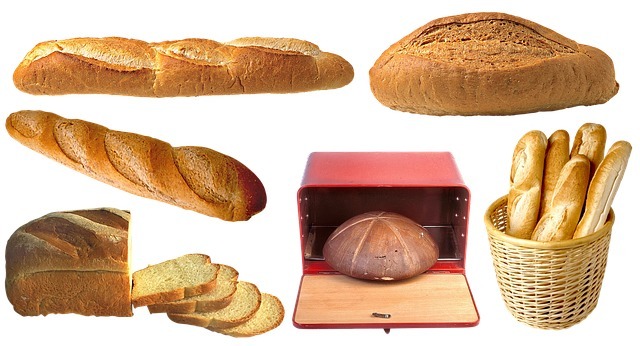
The bread bin itself is not recommended to be placed in direct sunlight, on a refrigerator, near a radiator or stove, in a draft. It is also better to set aside a place away from sources of strong odors (raw vegetables, tea, coffee). If you put a little salt in the bread bin, it will absorb excess moisture and protect the bread product from fungus. A raw, peeled apple, on the other hand, will slow down the drying of the roll.
Linen bags
Good storage conditions for bread are created by wrapping the loaf in cloth. Linen, cotton - natural materials, breathable easily. You can wrap the bread in a clean towel, or sew a cloth bag. It must be regularly washed, ventilated, dried in the sun. When washing, avoid powders with a strong smell so that the bread does not have a chemical smell. The correct storage conditions for bread and bakery products allow using white bread for up to 2 days, black bread - 3 - 4 days.
A little trick: if the fabric is rinsed in salt water (2 tbsp. l. per liter of water), the bread retains its freshness better.
You can purchase ready-made bags for storing bread products. They consist of 2 layers of fabric and a perforated plastic layer between them. Such a package combines the advantages of fabric and polyethylene products, devoid of their disadvantages. Therefore, bread rolls are stored in them longer, up to 4 - 5 days. It is better to have a couple of such bags and alternate them, allowing for airing. A similar effect can be achieved by putting bread first in a cloth bag, and then in a plastic bag, without closing it tightly.
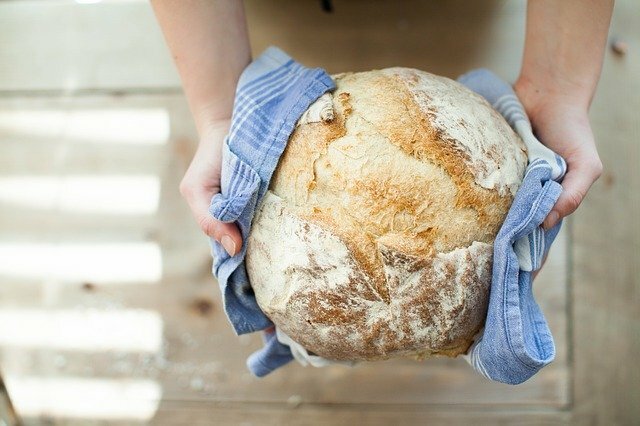
Freezer storage
Freshly baked bread tastes best, but sometimes there is a need to preserve it for a long time. A freezer will come in handy here, because the product can be stored for up to six months in a frozen state and not spoil. After removing it from the freezer, it is left at room temperature. And again, the bread is delicious and soft, as if from a store.
Just before use, you can sprinkle it with water and heat it in the oven or microwave. Then the crust will be crispy again. The product is sent to the microwave for 1 - 5 minutes, previously wrapped in a damp towel. In the oven - for 10 - 15 minutes at 150 - 180 degrees. Heated bread should be eaten immediately, because then it quickly turns stale. Therefore, it is better to freeze bread already cut into slices, and not a whole loaf. So that during storage the product does not lose moisture, it must be placed in a plastic container or wrapped in foil or foil.
Sliced loaves stay fresh longer. This is due to the fact that long-term storage bread is treated with special preservatives, iodized salt, acids, and whey are added to the dough. They inhibit the growth and reproduction of molds.
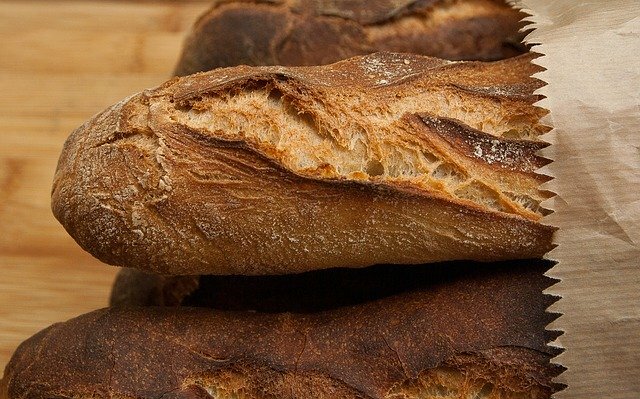
Can I store bread in the refrigerator?
Long-term storage bread (yeast-free, brewed) does not deteriorate for 5 - 7 days. When stored in the refrigerator it will also be usable for about a week. It does not grow moldy, but it turns stale and loses its original taste faster than at room temperature. It has been proven that at 0 - 10 degrees the evaporation rate of bread products is maximum.
In addition, even with regular cleaning, the refrigerator has a peculiar smell. It is not very pleasant to eat a loaf when it has absorbed foreign smells. There is another danger: if one of the food in the refrigerator goes bad, the process can spread to the food in the neighborhood.
Dried bread can also be used in food as croutons, croutons, bread crumbs. Before use, you can steam it on the stove in a water bath or in a double boiler. Simply reheat a slice of bread in the microwave by sprinkling it with water or placing a small container of water next to it.
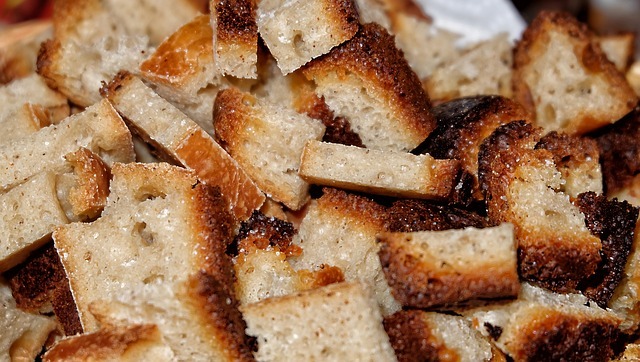
How to store bread correctly?
So, the main points on how to properly store bread at home:
- Observe temperature conditions up to 25 ° C and humidity up to 65 percent.
- Do not seal tightly in polyethylene, leave openings for free air passage.
- Observe cleanliness in the bread bin, use new bags made of paper, polyethylene or clean and dried from a cloth.
- Try not to buy a lot of bread unnecessarily, because it tastes best when fresh.
- The most reliable remedy for mold is to freeze the product.
If the bread product is baked at home, you can influence the shelf life already at the manufacturing stage. Dough components such as butter, milk, cream, eggs slow down the drying process of the roll. The finished product must be taken out of the bread machine immediately in order to achieve a crunchy crust. Cover with a clean cloth until it cools completely, place on a wire rack, remove from a draft.
To keep the bread soft, you can cut it not at the edge, but in the middle. The crust loses less moisture than the crumb. By cutting off the slices in the middle, the remaining 2 halves of the roll are combined, reducing the loss of water.

Let the bread on the table always be fresh, tasty, appetizing, and then the house will become even cozier, more hospitable.
average rating 0 / 5. Number of ratings: 0
No ratings yet. Be the first to rate.


